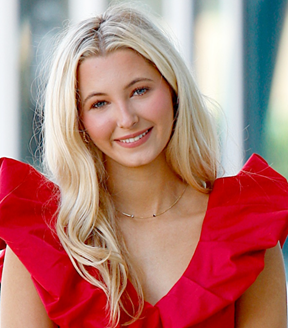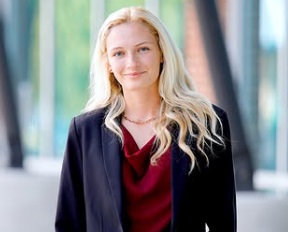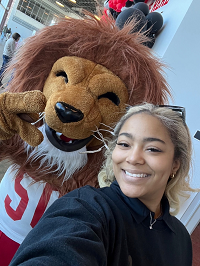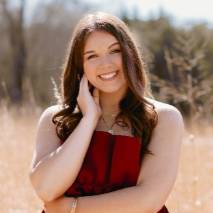25aug
EMCC ALUMNA SERVING FIRST-YEAR PHYSICIAN RESIDENCY IN GENERAL SURGERY
News
August 25, 2025
Dr. Shelley Rae Edwards was still a high school student on May 19, 2014, when she
walked across the stage in the Lyceum Auditorium on East Mississippi Community College’s
Golden Triangle campus to receive her associate degree. Nine days later she graduated
from East Webster High School. Edwards is believed to be the first dual-enrolled student
to receive her EMCC degree and high school diploma at the same time.
Eleven years later, Edwards is a first-year resident doctor at the Medical University
of South Carolina in Charleston, where she is serving a one-year residency in general
surgery. She is considering applying afterwards for a residency in plastic surgery,
which includes corrective surgery to address issues caused by injuries, illness or
birth defects, as well as cosmetic surgery to enhance people’s appearance.
Her preference lies in reconstructive surgery.
“I am particularly interested in operations that tend to go with wound care, which
often entails treating patients with chronic wounds, as well as those who have been
the victims of some sort of physical trauma,” Edwards said.
The Medical University of South Carolina rotates resident physicians to a different
service area each month. For Edwards, those rotations are either in a category of
surgery or are surgery adjacent, such as the Surgical Intensive Care Unit.
Most mornings, Edwards rises by 4 a.m. and drives to the hospital to meet with other
first-year residents and medical students who are serving on the same rotation.
They typically review the overnight charts of the patients they are assigned to assess
their vitals, lab test results and any other medically necessary information that
was collected. Edwards advises the medical students on what procedures to take when
performing exams and reviews pertinent questions they need to ask the patients to
evaluate their medical conditions.
Along with senior residents, the team will then visit with the patients to determine
what treatment is needed to aid in their recovery. If a patient has a medical problem
not associated with surgery, Edwards will collaborate with other physicians to formulate
treatment plans. That process may include coordinating with case managers and social
workers to ensure patients receive any necessary medical equipment, physical therapy
or other assistance.
“After those duties are somewhat wrapped up, I will join in on cases in the operating
room that have been assigned to me or to attend when they need an additional resident
present,” Edwards said.
At the end of the day, she will meet again with the other residents and medical students
to ensure any treatments assigned for their patients have been completed. They also
review the results of any new lab or imaging tests performed that day.
Around 6 p.m. Edwards will meet with the overnight doctor in residence to go over
each patient’s treatment plan and relay pertinent information, such as which patients
have pressing needs and should be monitored closely.
After that, she goes home and reviews case studies for the patients she will see the
next day and follows up with the medical students to ensure they know where they will
be going the next morning and which patients they will be seeing.
“At this stage, it’s not the most sleep I ever gotten in my life,” Edwards said. “But
you are definitely getting a very grounded, well-rounded education throughout this
whole process. It is such a gratifying thing to finally be doing the things that you
studied for.”
A native of the unincorporated area of Cumberland, which was eventually absorbed into
Maben, Edwards knew during her time at East Webster High School that she wanted to
become a doctor.
Nervous about transitioning into college out of a small high school, Edwards decided
to enroll at EMCC to “dip my foot into these more rigorous courses and give myself
a better foundation to ultimately start college afterwards.”
In addition to science and math subjects she completed at EMCC, such as biology, trigonometry
and calculus, Edwards also signed up for an elective class in drawing, which was taught
by art instructor Cynthia Buob.
“I remember her well,” Buob said of Edwards. “Shelley was very good at drawing, was
conscientious and worked hard. She was delightful. She was also my first high school
student. At that time dual enrollment was pretty limited.”
Edwards took a heavy courseload at EMCC during the summers, scaling back on college
classes when high school was in session. Edwards didn’t plan on graduating from East
Webster and EMCC at the same time. As her high school graduation neared, she realized
she was close to earning the credits for her associate degree at EMCC.
“I felt like I might as well push myself to complete my associate degree since I’m
that close,” she said.
A 2014 EMCC article states that Edwards was the first high school student to earn
an associate degree from the college.
“It’s a relief to be done,” Edwards is quoted as saying in the article. “This will
be the first time I haven’t taken classes in two years.”
After EMCC, Edwards enrolled at Millsaps College where she earned a bachelor’s degree
in Neuro & Cognitive Sciences. She then joined the seven-year MD-PhD program at the
University of Mississippi Medical Center in Jackson. Her first three years consisted
of medical school, followed by three years of graduate study to earn her PhD, with
a final year of med school to complete her medical doctorate. She graduated this past
May. 
While her PhD is in neuroscience, Edwards’ focus and research was in behavioral pharmacology,
which includes the study of drugs and how they alter behavior.
“I specifically studied a new class of fentanyl analogs that are at least purported
in some research studies to be safer than traditional opioids,” Edwards said. “They're
constrained to animal studies at this stage of research, but they would hypothetically
be less likely to cause things like overdose.”
It’s a topic she has researched since her undergraduate days at Millsaps.
“Opioids are such an interesting part of medicine in that they can be so concerning
and so dangerous, but for the things that they do well they are so much better than
anything else we have available to use for the treatment of pain,” she said.
“One of the most interesting and rewarding things is to be part of that research process,”
Edwards said. ”Even though for the most part, most scientists, myself included, will
never produce some giant change that's going to revolutionize the world of medicine,
we all kind of get lucky enough to be part of the system where we build off of those
that came before us and help push those that will come after us to make these small
steps toward a better world.”
ResearchGate lists 19 scholarly articles Edwards has co-authored on a wide range of
topics, including pediatric scalp reconstruction, barriers to telehealth for burn
care patients, and analysis of health determinants in cleft palate patients, to name
a few.
Although she has little spare time these days, reading and puzzles are favored ways
to unwind, as are caring for her collection of houseplants and spending time with
Valkyrie, a Great Dane and Catahoula mix shelter dog who is “very silly and a little
too smart.”
While Edwards has come a long way since her time at EMCC, she recalls her time at
the college fondly and said it was a good steppingstone in her educational journey.
“I definitely felt like the small class sizes at EMCC and having educators that were
easy to reach out to was beneficial to me, especially in the first few courses,” she
said. “At first, I had no idea what I was doing or how to navigate basically anything.”
EMCC biology instructor Christy Steadman was not teaching at EMCC when Edwards was
a student at the college, but Steadman knew Edwards and her family well.
“Shelley’s mother was a teacher at East Webster High School and taught me and my children,”
Steadman said. “We loved her.”
Steadman said it was “kind if a big thing” at East Webster High School when Edwards
graduated from both the high school and EMCC. She has since followed Edwards’ progress.
“I am not surprised,” Steadman said of Edwards’ accomplishments. “Shelley was always
determined in what she wanted to do. It is exciting watching her. She is very bright
and was always a good kid.”

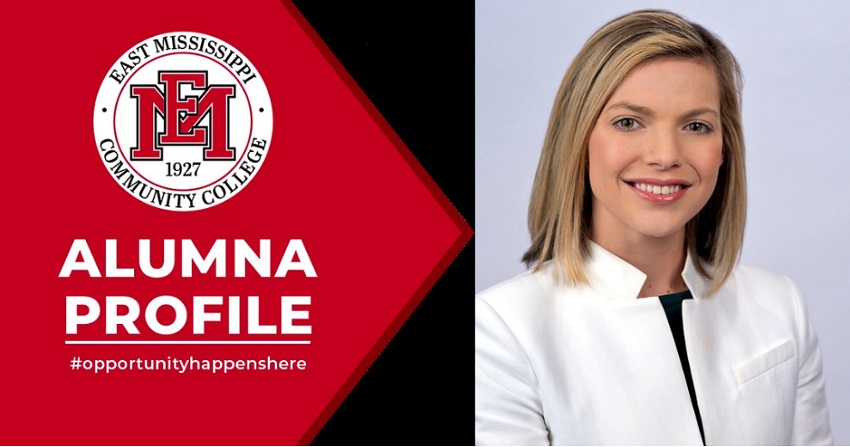


 Visit a Campus
Visit a Campus